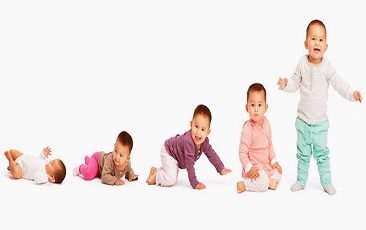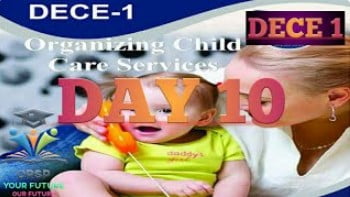DECE1-UNIT2-IGNOU-DAY10-ORSP
Welcome To
Odisha Regional Study Point
We Allows the best competitive exam preparation for SSC,BANKING, RAILWAY &Other State Exam(CT, BE.d) DECE(IGNOU) In ଓଡ଼ିଆ Language…
Why opt ORSP?
✅Daily Free Live class
✅Daily Free practice Quiz
✅FREE Live Tests Quiz
✅Performance Analysis
✅All Govt Exams are Covered
DECE1-UNIT2-IGNOU-DAY10-ORSP
UNIT 2
BASIC CONCEPTS IN CHILD DEVELOPMENT
Structure
2.1 Introduction
2.2. Scope of Child Development
- 2.2.1 Development and Growth
- 2.2.2 Stages of Development
- 2.2.3 Areas of Development
2.3 Importance of the Study of Child Development
- 2.3.1 Describing Universal Patterns of Development
- 2.32 Explaining Individual Differences in Development
- 2.3.3 Understanding Human Behavior
- 23.4 Application Day-to-Day Interactions with Children
2.4 Importance of Infancy and Early Childhood
25 Summing Up
2.6 Glossary
2.7 Answers to Check Your Progress Exercises
2.1 INTRODUCTION
In the earlier Unit you have read that each child has different experiences during
childhood. The variety of experiences accounts for some of the differences among
children. What other factors are responsible for differences among children? These and
related issues are the concern of the field of Child Development. In this Unit you will
read about the scope and importance of the discipline of Child Development.
Objectives
- After studying this Unit you should be able to
- explain the scope of the discipline of Child Development
- differentiate between development and growth
- explain the stages of development
- describe the different areas of development
- discuss the significance of the study of Child Development
2.2 SCOPE OF CHILD DEVELOPMENT


Think of a fertilized ovum in the womb of the mother. Is it not astonishing how the
single celled organism develops into a human baby in nine months? This baby has
complex systems like the respiratory system, the nervous system and the skeletal system
which are a part of the equipment for survival. The newborn child responds to
touch and able see, smell and cry. These capacities will help her to adjust to the
surroundings which are very different from those in the womb. Despite these abilities
the infant is dependent on the caregiver for nurturance. A child who is totally dependent
on the caregiver will slowly learn to sit, then stand and then walk. She will also learn to
feed and clothe herself and express her needs verbally. Gradually, the child will become
more independent and her interests will widen. She will make friends and participate
activities with them and help with tasks at home. She may also get involved in income
generating activities. She may choose a vocation and take courses to prepare for it.
This child will grow into an adult who will be economically independent, get married
and have children. How docs this transformation come about from a single celled
organism in the mother’s womb to a person who is a competent adult and an involved
citizen?
What makes you the person you are? How is it that your own brothers and sisters are
different from you – not just in the way they look but also in their behaviour ? Why is
it that one child is popular in the neighborhood and has many friends while the other
prefers to play alone? What makes one child a leader in her group while the other is
timid and stays close to the teacher all the time? Do all children develop various skills
and abilities at the same time? Are all three year old children similar? What should be
expected from a four year old child? Is there a pattern in development by which one
can expect a three year old to behave differently from a five year old? Such questions
are the concern of the field of Child Development.
The discipline of Child Development is concerned with the changes in the behaviour of
children over time and explains why and how they occur. Thus it aims to describe and
explain development in the areas of physical, social, emotional, language and cognitive
functioning. However, childhood experiences have an impact on the ways of thinking
and behaviour in adulthood. Thus the student of Child Development is concerned with
growth and behaviour that affects the entire lifespan. This course is, however, limited to
understanding the development of children from birth to six years.
2.2.1 Development and Growth

The terms ‘development’ and ‘growth’ have been used in the foregoing discussion. Can
you tell what is the difference between the two? The term development has been used
to refer to changes in the body, thinking capacities and social and emotional behaviour.
Can we call all such changes ‘development’? Let us understand this through an example,
When a three month old child becomes hungry, she begins to cry. Once she is fed her
behaviour changes. She becomes quiet again. Such a short behavioural change is not
termed ‘development’.
The term ‘development’ is used for changes in a person’s physical and behavioural traits
that emerge orderly ways and last for a reasonable period of time. The three main
characteristics of these changes are that they are progressive, orderly and long lasting.
The term ‘progressive’ implies that these changes result in acquisition of skills and
abilities that are complex, finer and more efficient than the ones that preceded them. To
understand this, let us consider the advancement that takes place from crawling to
walking and from babbling to taking. Walking requires the child to move upright and
balance one foot after the other. This requires greater coordination of the muscles and is
more complex than crawling. Walking is also more useful as it frees the hands for other
activities and increases the range of vision. Similarly, talking grows out of babbling and
is certainly more complex and effective communicating with others.
The term ‘orderly’ suggests that there is an order in development. Every development
is built upon the previous one and cannot occur before it. Thus a child has to be able
to crawl before she can walk and walk before she can run. Similarly, the adult’s
ability to handle complex situations is built upon the child’s capability of doing
simpler tasks. The ability to take decisions in adult life develops out of the childhood
experiences of selecting which game to play or which book to read. Development,
therefore, is a process through which a person learns to function with greater ease and
competence.
“Growth’ refers to physical increase in the size of the body. Increase in weight, height
and the size of internal organs is growth. Growth refers to a quantitative change, that is,
a change that can be measured. However, we do not merely grow in size. If that were
so, a newborn baby would simply be a bigger baby at the age of 20 years. Something
else happens along with increase in size — there is a change in form and an increase in
the complexity of body parts and their functioning, thinking abilities and social skills,
among many others. In other words, we do not merely grow, but also develop.
Development thus refers to both quantitative as well as qualitative changes. It i
changes not only in structure but also in function. Development may be defined as
orderly and relatively enduring changes over time physical and neurological structure,
thought processes and behaviour that every organism goes through from the beginning
of its life end. Growth only one aspect of the larger process of development
Development continues even when physical changes are not visible. Physical growth
slows down considerably after adolescence but development does not. There is
development in the complexity of thought and social skills, as also in the use of
It includes o the language.

2.2.2 Stages of Development
The human life span has been divided into the stages of infancy, childhood, adolescence
and adulthood. You have become familiar with these words in the text. In these stages
there are characteristic differences in the thought processes and skills of individuals. Let
us now briefly read about these stages.
The period from birth to two years of age is referred to as the period of Infancy. In
this period the child is totally dependent on the caregiver for the fulfilment of her needs.
After birth, this is the period of most rapid growth and development. The child’s skills
and abilities increase. By the end of infancy she is able to walk, run, communicate her
needs verbally, feed herself, identify family members, recognize herself and venture
confidendy in familiar surroundings.
Confidently exploring the world around her
The period of childhood is from two to twelve years of age. Development at this stage
not as rapid as during infancy. During this period the child refines the skills she has
acquired during infancy and learns new skills as well. This is the period when
coordination of
the parts of the body improves. During childhood she also learns the
ways of behaviour that are considered appropriate by the society. The child meets many
people outside the family and forms attachments with more people. As the child grows
and her thinking capacities mature, she realizes that she can do many things. She can
play on a swing, make a bouse from sand, draw, paint or sing a song. This gives her a
feeling of confidence. During this period she becomes more independent though adult
guidance is constantly needed.
The period of childhood is divided into two stages: the period of early childhood
(2-6 years) and middle childhood (6-12 years). The period of early childhood is also
referred to as the preschool age because at this age the child is learning skills that will
help her to do tasks associated with schooling. The preschooler has mastered the words
to ask questions about things and people. She learns about numbers, colours, shapes and
the reasons for everyday events. All these concepts
develop from actually seeing things
and doing various activities. Doing a task is important for learning about it. She learns
to make friends and values relationships with people. Children’s ability to imagine
receives a major spurt during this period. This can be seen in their play. They enjoy
playing games that require them to pretend and make-believe. Preschoolers cannot play
together for long. After some time they start playing independently again, though they
may be with each other. You will read more about this aspect of play of children in
The child in the age group 6-12 years has matured a great deal and is expected to
behave more responsibly than the preschooler. Parental expectations of the child increase.
The child moves out of the home to help the family members in their work and may
even go to school all by herself. Middle childhood is the period when the child becomes
involved in Icarning skills that will help her to take up a vocation later on. The child’s
store of information grows at a fast pace. Her thinking develops rapidly and her interest
in the outside world grows by Icaps and bounds. There is active interaction with children
of the same age. They are able to cooperate with each other during play and are able to
follow the rules of the game. Playing team games is a development of this period.
The next stage is referred to as the period of adolescence (12-18 yrs.) The beginning of
this period is marked by puberty. Puberty refers to the stage around 11-14 years of age
when there is a spurt in physical growth. This results in a rapid increase in height and
weight and the emergence of secondary sexual characteristics. Examples of these are the
development of facial hair in boys and development of breasts in girls. The onset of
puberty is carlier for girls than for boys. These rapid physical changes lead to a need for
emotional readjustment.
At this age the peer group becomes very important and the adolescent follows the rules
and the codes of her group. Feelings of loyalty and pride for the group are very strong.
At times the values of the peer group may become more important than those of the
family. There are conflicting expectations of the adolescent. Sometimes she is expected
to behave as an adult and at other times she is treated like a child. During this stage she
also has to choose a vocation or prepare for marriage. During adolescence thinking
develops further and becomes more complex. The individual can understand and deal
with varied situations. She can think of abstract problems and work out their solutions.
All this helps her to prepare for the roles and responsibilities she will be expected to
carry out as an adult.
After the age of 18 years the person is referred to as an adult. There may be different
criteria for considering a person an adult. One may be the ability to support oneself
economically and another may be getting married and starting a family. But individuals
from some families continue to remain financially dependent on their parents till early
twenties. In others, both marriage and work may have to be taken up before adulthood.
There are also social and legal definitions of adulthood. For example, an Indian can vote
in the elections at eighteen years. Legally, girls may get married at 18 years and boys at
21 years of age. However, adulthood typically involves either working or preparing for
one’s livelihood. By now physical changes are complete and the person is mature. It is
important to remember that these divisions of the life span are not rigid. It is not as if
the child suddenly changes from an infant to a preschooler or from a child to an
adolescent. Change is a gradual and continuous process and transition from one phase of
life to another will be different for every individual. You will read in detail about the
periods of infancy and early childhood in this course.
Check Your Progress Exercise 1
1) Explain the meaning of the term ‘Child Development in the space provided below.
2) Read the sentences given below carefully and fill in appropriate words in the blanks:
a) Development implies as well as ……. changes while growth refers only to changes that can be ………..
b) The three main characteristics of changes that can be termed development are………..,…….. and ……….
3) Fill in the blanks with appropriate words:
a) After birth, infancy is the period of growth.
b) The period of childhood is divided into preschool years spanning ………… to ……… years and middle childhood
spanning………….. to ……… years.
c) ………….. is characterized by the appearance of secondary sexual characteristics.
DECE1-UNIT2-IGNOU-DAY10-ORSP
QUIZ TIME
LEADERBOARD
| Pos. | Name | Score | Duration |
|---|---|---|---|
| There is no data yet |
WATCH VIDEO
DECE1-UNIT2-IGNOU-DAY10-ORSP
DECE1-UNIT2-IGNOU-DAY10-ORSP
Welcome To
Odisha Regional Study Point
We Allows the best competitive exam preparation for SSC,BANKING, RAILWAY &Other State Exam(CT, BE.d) DECE(IGNOU) In ଓଡ଼ିଆ Language…
Why opt ORSP?
✅Daily Free Live class
✅Daily Free practice Quiz
✅FREE Live Tests Quiz
✅Performance Analysis
✅All Govt Exams are Covered


IF YOU HAVE ANY DOUT CLICK ON BELOW IMANGE OR YOU WILL FIND EVERYTHING BELOW
❓LIVE CLASS SCHEDULE❓
🔍 EVERY DAY🔎
6.00 AM- Current Affairs Live
2.00 PM- Resoning Live
2.50 PM- GS/GA Live
8.00 PM – ENGLISH LIVE
8.30 PM – Math Live
9.15 PM- Topper Announcement
9.30 PM- DECE PYP Live
Sunday-English+Odia Live+Teaching Aptitute

ORSP TELIGRAM LINK- https://t.me/ORSP_OFFICIAL
ORSP DISCUSS TELEGRAM LINK- https://t.me/joinchat/QgjyeVRz4wm4_UmdKw6Wzw
DECE TELEGRAM LINK-https://t.me/ignoudece2020
DECE DISCUSS LINK-https://t.me/joinchat/QgjyeVkzi4FU4XfkmiMrrQ
Subscribe Our YouTube Channel – https://www.youtube.com/c/ODISHAREGIONALSTUDYPOINT
App Download Link-
DOWNLOAD FROM GOOGLE PLAY STORE
WATCH Our STUDY PLAN Video for Kick Start your Competitive Exam Prep.
✏️✒️📚📖✅✅✅
ORSP Daily74M Quiz App(Earn Money by Answering Daily Quiz(Current Affairs+Math+Reasoning+GS+GA)-(WATCH VIDEO)
Join With us As per Schedule
And
Happy Learning…
Thank You
ORSP
(9502052059)

